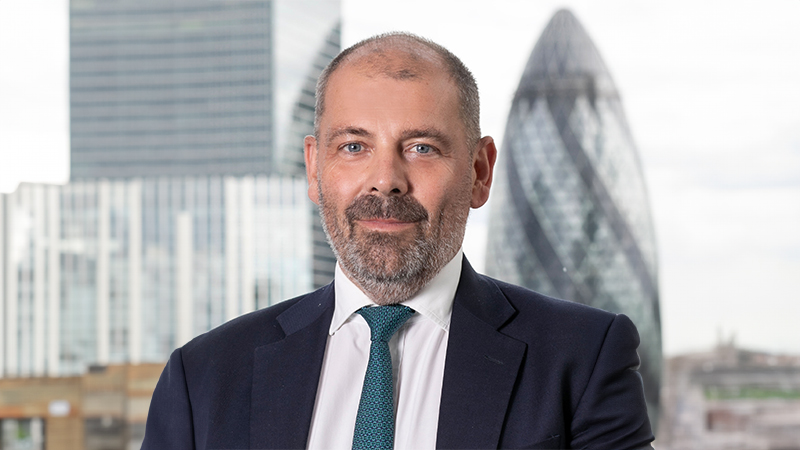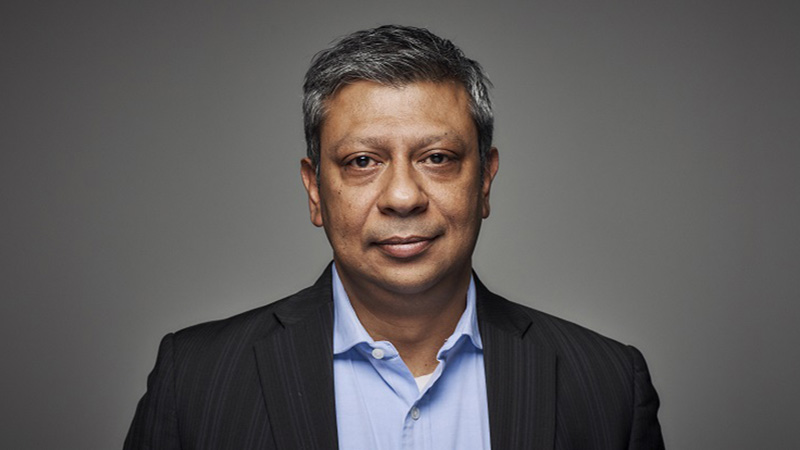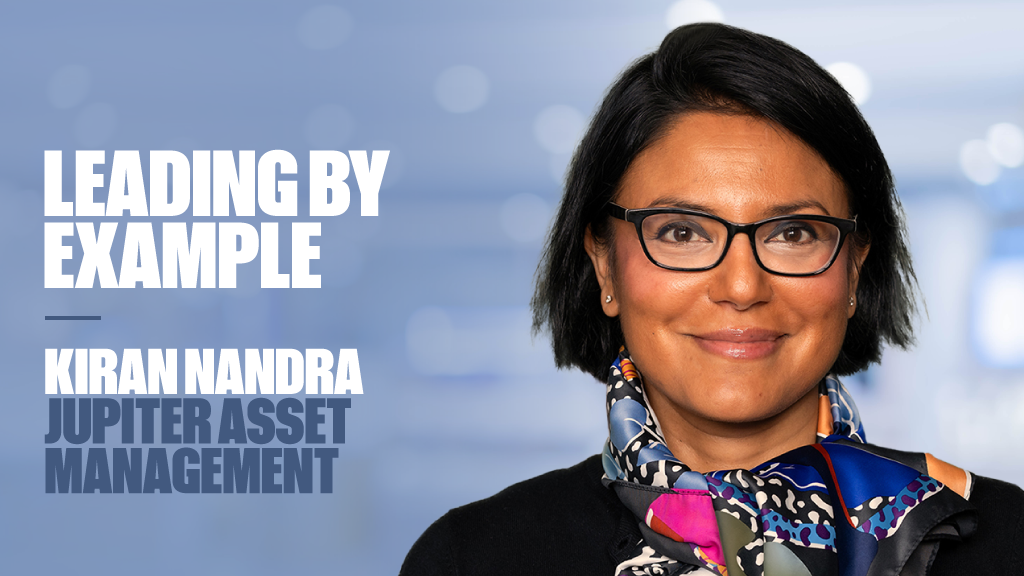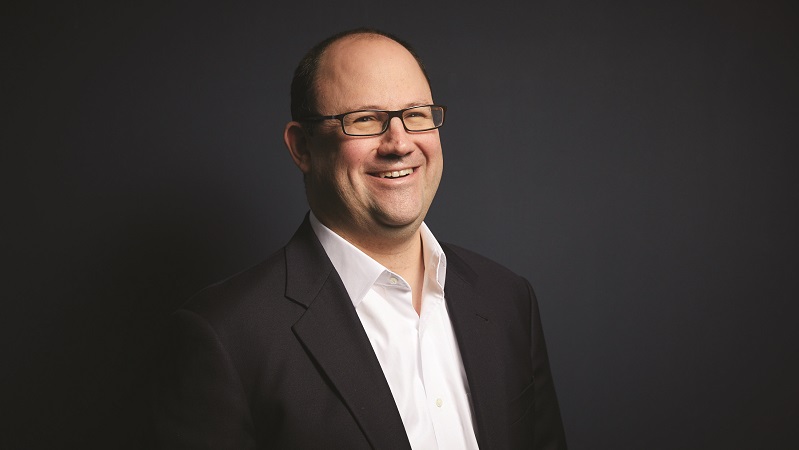Moneyfarm was a chance to do something entrepreneurial for Richard Flax, CIO, who joined the £400m robo-adviser in 2016. Flax started his career as an economist at Morgan Stanley in New York but crossed over into portfolio management before joining Moneyfarm, founded in Italy in 2012, as it launched its first portfolios to the UK market.
In November, the business, which is backed by Allianz Group and several private equity and venture capital firms, announced Germany would become its third market.
The leap from fund management to robo- advice was not a big one, he says. “From an asset allocation perspective, everybody deserves the best outcome you can give them, whether it’s an institution or individual. That is as true as it ever was as a wealth manager or an asset manager, wherever you want to make the distinction.”
While it was the first time Flax had used ETFs as the primary tool for investing, he had used them in the past for gaining market exposure. “The precise tools we use to implement are a little bit different but not dramatically so.”
Target practice
Moneyfarm offers six risk-targeted portfolios ranging from 100% fixed income to between 70% and 80% in equities. The lowest- risk portfolio has underperformed rival robo-adviser products over two years, according to Boring Money data from the period to 30 September 2018. An investor with £5,000 would have been £8 worse-off at the end of the period.
Its medium-risk product, Portfolio 4, ranked fourth out of eight competitors, while Portfolio 6 ranked fifth in the aggressive category. Evestor topped the low- and medium-risk categories while Nutmeg came first in the aggressive category.
Flax admits the funds have been a little below their risk targets in the past couple of years. The low-risk portfolio is among the few robo-adviser products with no allocation to equities. Instead, it holds 3% in cash with the remainder in fixed income, 55% of which is in short-dated government bonds and cash-like products.
The higher-risk portfolios are similarly equity-lite compared with its rivals. Boring Money analysis shows Moneyfarm Portfolio 4 held 53.5% in equities and 42.9% in bonds at the end of the third quarter, compared with True Potential Balanced, a medium risk-rated portfolio that held 59.8% in equities and 27.5% in bonds.
Regarding falling short of risk targets, Flax says: “We’ve had a series of conversations with the investment committee about whether we should do something about that.
“It seems imprudent to think the volatility levels we saw in 2017 will continue in perpetuity, and so we’re happy to run volatility that is a little bit below the stated targets we have in the short term. Over a longer time horizon, though, we are in line.”
Strategic asset allocation is an annual process that takes a 10-year view, while portfolios are rebalanced as needed throughout the year, typically between three to five times.
“We rebalance when we think it’s appropriate based on what we see in markets, but our mindset is very much that we don’t want to over-trade,” says Flax.
Decent exposure
The team recently increased exposure to sterling, primarily through hedged products. “We are cautious about adding hedged ETFs at every opportunity because of the costs you incur, and over the long-term it’s not clear how much benefit you derive.
“But amid political situations such as we have in the UK at the moment it seems prudent,” Flax told Portfolio Adviser in early November, ahead of the flurry of news regarding the final Brexit withdrawal agreement.
Sterling exposure in high-risk portfolios is now about 65% compared with less than 50% a year ago. Moneyfarm moved to a new provider to get hedged exposure as its existing ETFs did not offer hedged sister products.
Moneyfarm also trimmed its equity exposure in October but Flax says this was due to the risk/reward outlook for the asset class shifting over the next two years rather than the tech-led market sell-off.
US valuations are slightly above their long-term average, while the UK and Europe are in line or slightly below historical averages and emerging markets are lower still, he says.
But corporate earnings and profit margins underpin current equity exposure as they reach recent peaks, according to Flax. Earlier in the year, the team reduced allocations to emerging markets having increased that position in early 2017.
Within fixed income, Flax says he is managing duration risk through exposure to short-dated government and corporate bonds, plus high yield. “We have more short-dated fixed income than we would have in the past.”
In general, the team chooses to be fully invested, barring some liquidity, meaning cash allocations haven’t moved materially since launch. The range doesn’t currently have exposure to thematic ETFs. “We’ve been more mainstream than that, partly to keep costs down. When you introduce things like thematics, inevitably the cost of implementation will go up a bit.”
Portfolios smaller than £50,000 hold seven ETFs while larger pots contain 14. Looking at Portfolio 4 as an example, this has minimal effect on asset allocation. But when it comes to the geographical breakdown smaller pots have a smaller home bias, with 32% allocated to the UK, while larger pots hold 38%.
The US features more strongly in smaller pots, representing 34%, while the eurozone represents 9%. In larger portfolios, those allocations are 23% and 17%, respectively. Disparities between pots under and over £50,000 increase in riskier portfolios.
Cost is an important consideration in ETF selection but the team also assesses tracking error, size, bid-ask spreads and whether the product uses physical or synthetic replication, with a preference for the former. Moneyfarm first considers what exposure it wants, examining the best index to provide that, then looking at the ETF provider.
Exposure to a diverse range of asset managers is also important but comes with challenges. “In an industry where the returns to scale are very high, we’re obviously going to have exposure to a relatively small number of large issuers, but it is something we do consider,” says Flax.
The team uses about seven ETF providers. When it comes to the robo-adviser’s own costs, an investor with £5,000 would pay around £55 for a lump-sum investment into a savings plan. This is in line with most of its peers, except Evestor, which is about half that price, according to Boring Money.
Moneyfarm does not divulge the demographics of its customers, which portfolios are most popular or the average size of client pots.
Navigating the market
While active managers are touting their ability to provide downside protection as markets turn more volatile, Flax says passive portfolios can navigate bearish markets through asset allocation.
“If you’re a fully invested active equity portfolio and think you’re going to outperform in a down market, your list of options begins with buying very defensive securities.
“That will help you up to a point but you’ll go down less. Or you’re going to have cash, in which case you’ll have the same conversation you would with a passive multi-asset or passive portfolio in that context. Or you have enough flexibility in your guidelines to use derivatives or tail-risk hedging or something like that. Some portfolios can but most probably don’t.”
Flax suspects the active versus passive debate is set to shift to costs and value for money. “If you understand passive as not taking a lot of idiosyncratic risk in a way a bottom-up active manager might, that’s actually quite a specific definition.
“People who implement through passive are taking a set of active views, even if they are buying the most traditional market cap-weighted ETF.” Moneyfarm does not currently invest in active ETFs but is not averse to it, he says.
ETFs allow discretionary fund managers to implement exposures much more precisely, he says, mulling how a robo-adviser might differ from a professional investor in active funds.
“Inevitably, a fund selector picking managers is trading off the belief that they will generate alpha against an uncertainty as to exactly what they’re going to be investing in. You can’t precisely say, ‘This is what their exposures will be,’ because they’re an active manager and their exposures will change.
“Potentially, you’re trading off some knowledge as to what the exposures will be against the likelihood that they will generate alpha in excess of a benchmark.”
Biography

Richard Flax was a portfolio manager at Pimco prior to joining Moneyfarm as CIO. Before that, he worked as an executive director and portfolio manager at Goldman Sachs. He has also spent time as a fixed income analyst at Fleming Asset Management and as an economist at Morgan Stanley.











